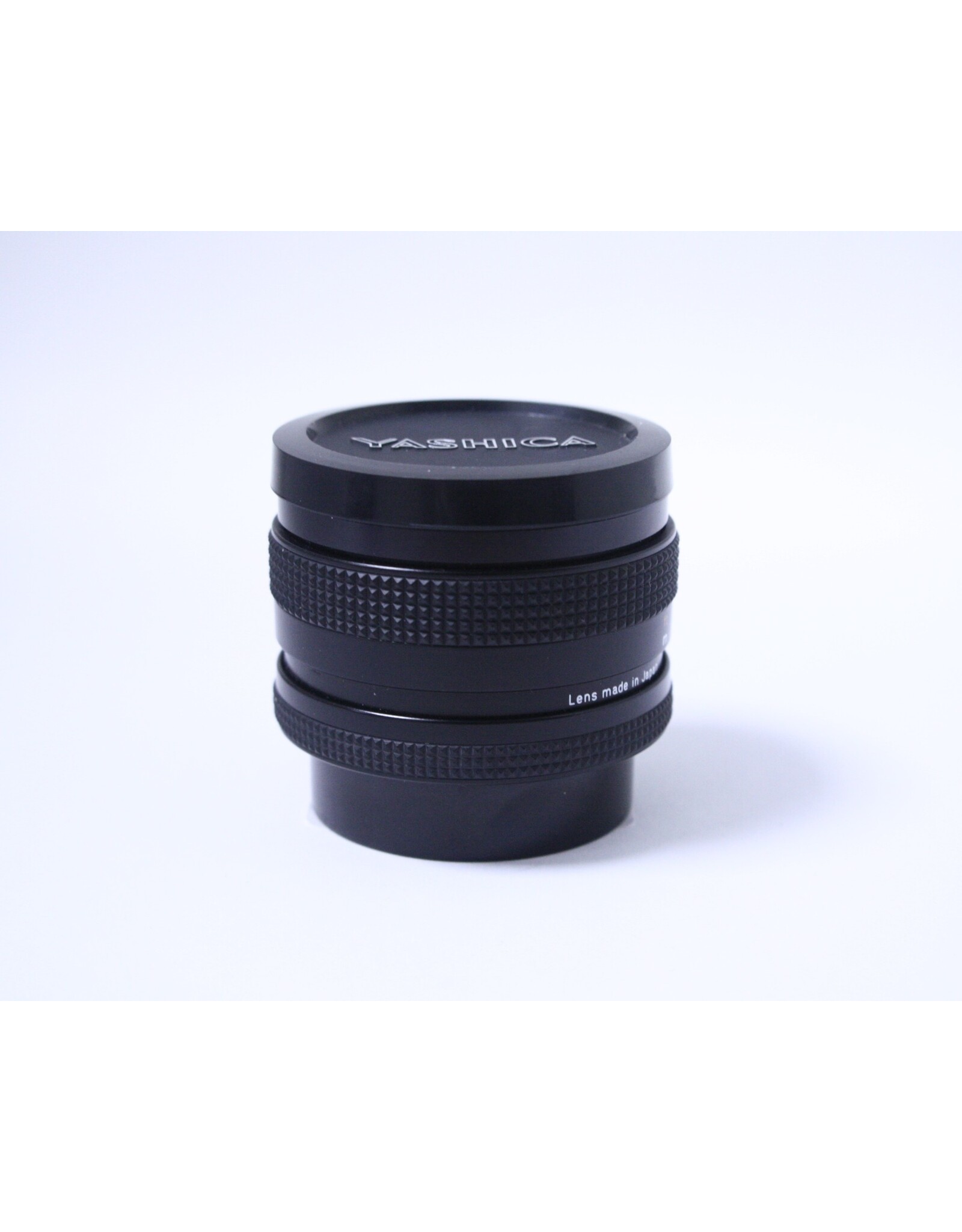Carl Zeiss Planar f/1.7 50mm T* Lens for Yashica/Contax Cameras (Pre-Owned)
| Availability: | In stock |
| Delivery time: | Hurry! Buy Now before it is GONE! |
Excellent Condition
The Carl Zeiss Planar 50mm f/1.7 is a renowned manual focus prime lens designed for Yashica/Contax cameras. This lens is part of the Contax/Yashica (C/Y) mount system and is manufactured by Carl Zeiss, a German optics company with a long history of producing high-quality camera lenses. The Planar design is well-known for its optical excellence and was used in various camera systems.
Here are some key features and characteristics of the Carl Zeiss Planar 50mm f/1.7 lens:
-
Focal Length: The lens has a 50mm focal length, making it a standard or "normal" lens for 35mm film and full-frame digital cameras. This focal length closely approximates the field of view of the human eye, making it versatile for various types of photography.
-
Maximum Aperture: The f/1.7 maximum aperture allows for excellent low-light performance and depth of field control. It can produce images with a shallow depth of field, isolating subjects from the background and creating beautiful bokeh (the quality of the out-of-focus areas).
-
Optics: Carl Zeiss lenses are renowned for their optical quality, and the Planar design is no exception. It typically consists of several lens elements arranged in a specific configuration to minimize optical aberrations and deliver sharp, high-contrast images.
-
Build Quality: Carl Zeiss lenses are known for their robust build quality and durability. The lens is typically constructed with metal components and high-quality glass elements.
-
Manual Focus: This lens is a manual focus lens, which means that you will need to focus it yourself. This can be a drawback for those who prefer autofocus, but it allows for precise control over your focus point.
-
Yashica/Contax Mount: The Carl Zeiss Planar 50mm f/1.7 lens is designed to be used with Yashica and Contax cameras that utilize the C/Y mount. It's essential to ensure that the lens is compatible with your camera system.
-
Legacy and Adaptability: While these lenses were initially designed for film cameras, they can often be adapted for use with modern digital cameras, especially mirrorless systems, with the appropriate adapter.
-
Image Quality: This lens is known for its sharpness, contrast, and color rendering. It is often praised for its ability to capture fine details and produce stunning image quality.










